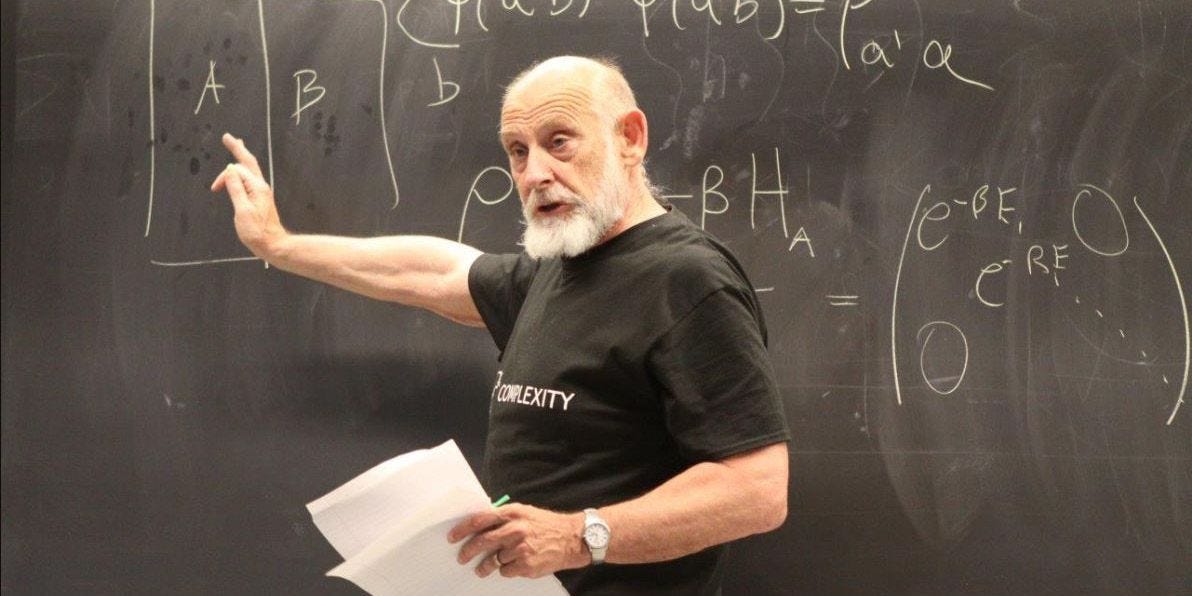The Father of String Theory on the Limits of Intuition
Theoretical physicist and a father of string theory
The human brain and body evolved to survive in a simple, visible world, one of stones, trees, and moving bodies. Human minds are built to understand the three-dimensional, cause-and-effect world described by Isaac Newton. We can picture how a ball falls and how a car moves, because that’s the world our ancestors lived in.
However, the physical world goes far beyond that. When scientists began studying matter at the smallest scales, they discovered the quantum world — a place that defies all intuition. Particles can exist in several states at once, behave as both waves and particles, and even influence each other instantly across space. None of this fits how our brains expect the world to work. Nobel Prize winner Richard Feynman said, “If you think you understand quantum mechanics, you don’t understand quantum mechanics.”
The problem isn’t the theory. It’s humans. Evolution didn’t prepare our minds to grasp the world at this level.
Because our intuition fails, physicists rely on mathematics. The equations of quantum mechanics, time relativity, and other theories predict experiments with stunning accuracy, even though we can’t visualize what they describe. Feynman claimed math is the true language of nature.
Scientists sometimes use metaphors to help the public, such as Schrödinger’s cat, wave-particle duality, and the universe as a hologram. However, these are only rough approximations. The physical universe isn’t “like” anything in our daily lives, and every metaphor eventually breaks down.
Leonard Susskind is the Felix Bloch Professor of Theoretical Physics and Founding Director of the Institute of Theoretical Physics at Stanford University. He is one of the fathers of string theory, and, along with Dutch Nobel Prize Winner Gerard ’t Hooft and Argentinian Institute for Advanced Studies professor Juan Maldacena, developed the theory of the universe as a hologram.
In the video excerpt below, he describes plainly the limits of evolved human intuition and metaphors, how many things can only be understood mathematically, and how mathematicians can rewire their brains to intuitively understand esoterica areas of physics.



My Ph.D. thesis was about the mathematics of quantum mechanics, specifically the Feynman Path Integral. But I was trying to use simpler math, such as asymptotic expansions and basic functional analysis to explain what Feynman was up to. Today many of the mathematical models being used are highly speculative and don't really help much, including string theory. Typically they appear to "explain" somethings but fail to explain others. Often they get too complex when trying to explain too many things.
There's a certain common phenomenon in mathematical models: You can "explain" almost anything by adding enough "degrees of freedom" (as in string theory) or other speculative assumptions. The big challenge, as Einstein understood, is to find relatively simple models to elucidate at least the key features of some complex phenomena. But such models, if they exist at all, may be difficult to create precisely because they defy intuition. The failures of economists, for example, are legendary because their simple and intuitive models just aren't up to the task of modeling the complexities of real-world economics. The good news is that the realms of intuition and common sense can often be extended by exploring new or different points of view. This why I support speculative physics as an exploratory tool but am slow to jump on the latest band wagon.